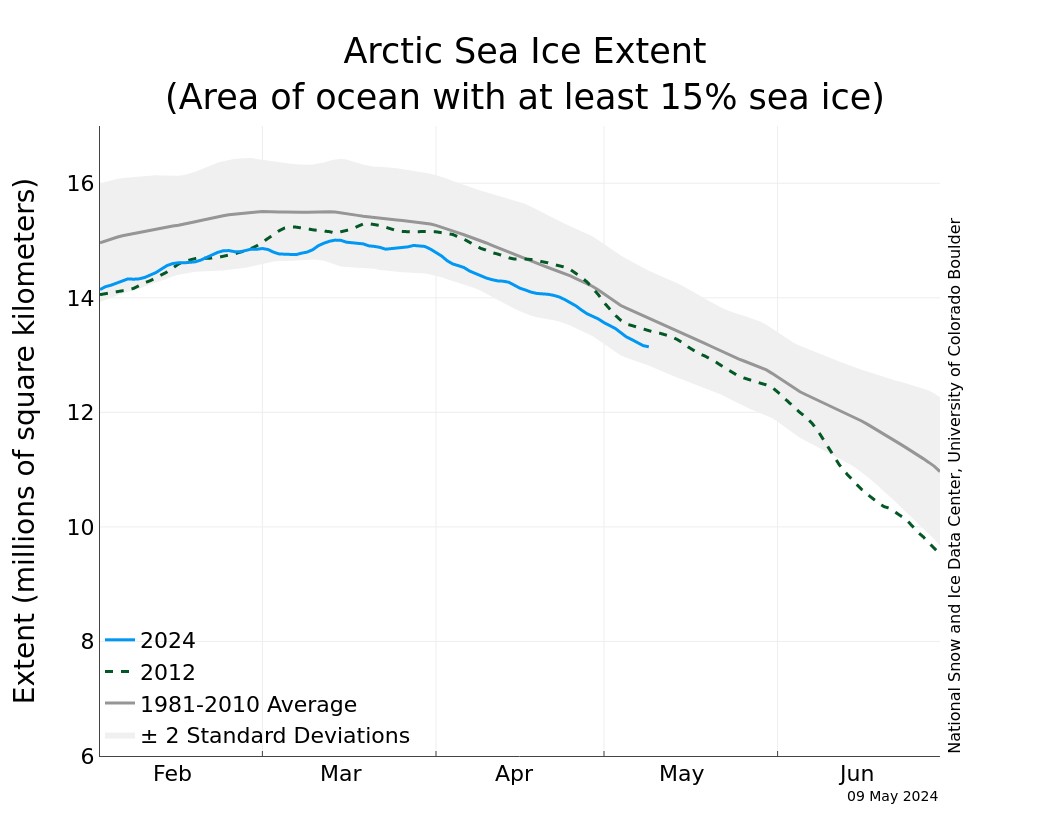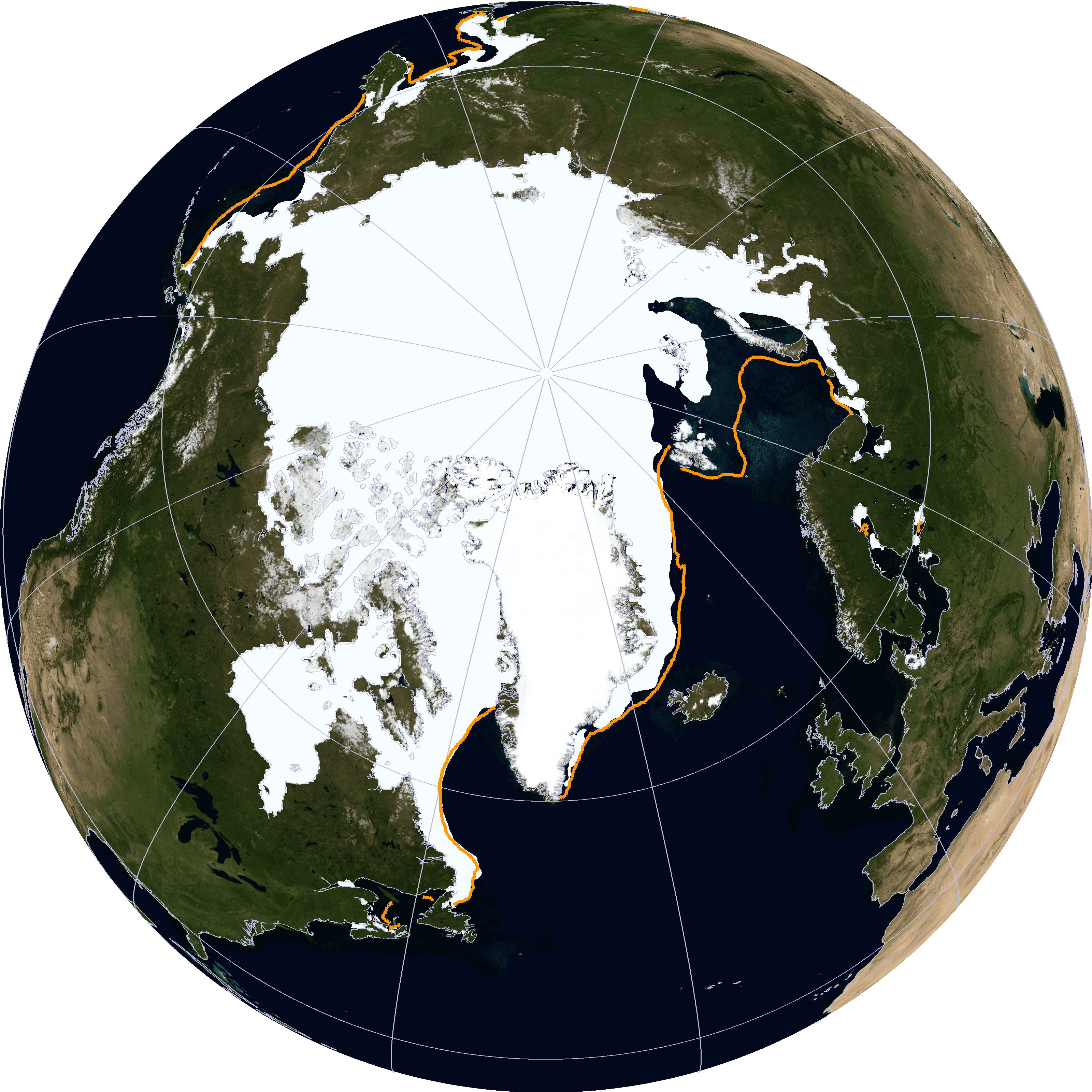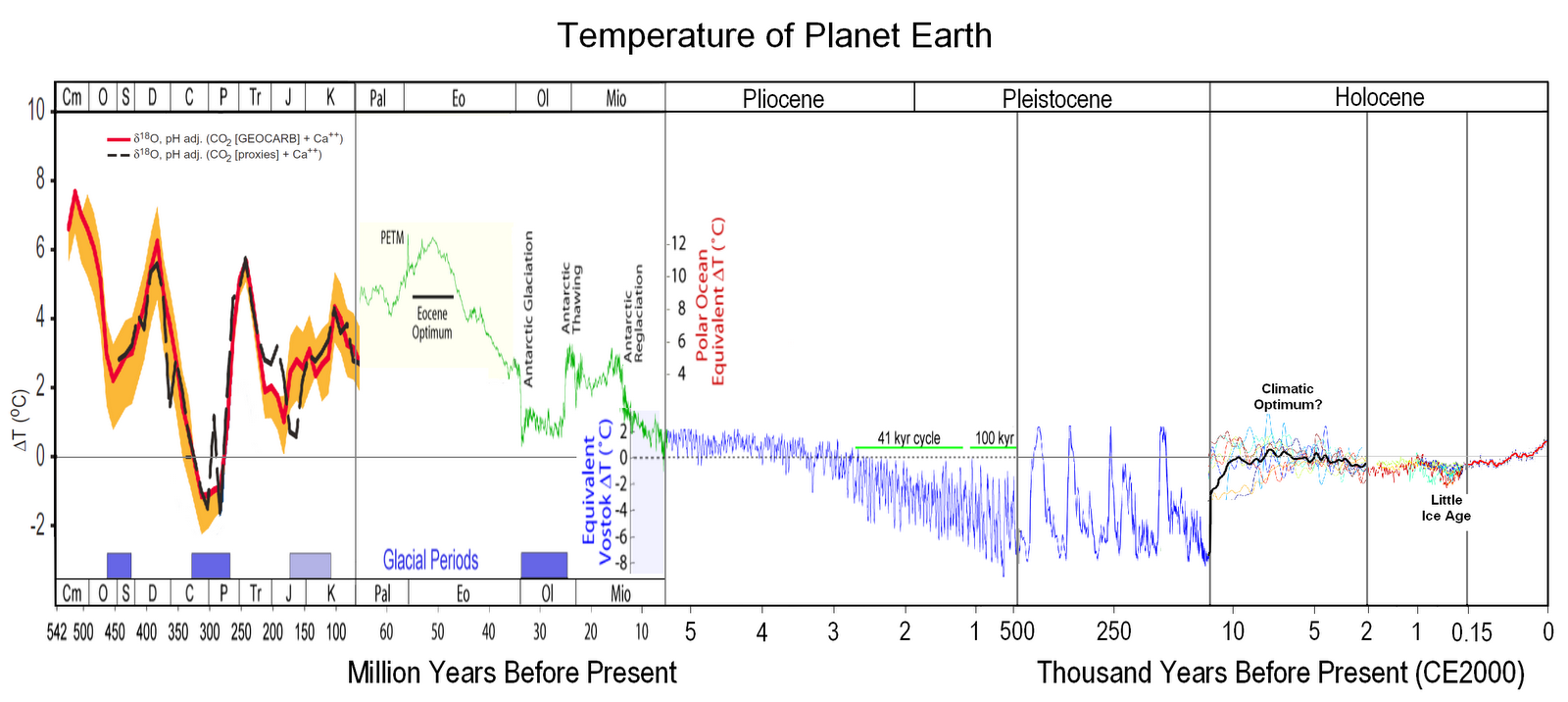Arctic Sea Ice and Al Gore s Prediction 2013
EXCERPT
Dr. Barber has been searching for 200-foot thick multiyear Arctic sea ice in the Beaufort Sea, an area of the Arctic Ocean that stretches for almost 1,000 miles along the coasts of Alaska and Canada.
For his research in summer 2010, he cruised through the Beaufort Sea in the ice breaker Amundsen and never did find that multiyear ice. What Barber's team did find was vastly different from what the satellites were telling them was there. They thought they would find 20- to 30-foot thick multiyear ice covering 7 percent to 9 percent of the Beaufort Sea.
Instead, they found 25 percent open water and very small remnant multiyear and first-year floes interspersed with thin new ice in between. Unfortunately, these satellite errors are not in our favor. The problem is because these conditions are new. They simply have not existed before, so there was no way to test for them and know that this sea icescape looks, to the eye of the satellite, exactly like a sea icescape that is thick and solid.7
The ice the Amundsen encountered was so rotten that it did not impede the forward progress of the ship. What they found was hundreds of miles of what Barber called "rotten ice." This was 20-inch layers of fresh ice covering small chunks of older ice.8This discovery came as a great surprise to this researcher as he cruised through the rotten ice of the Beaufort Sea at 14 miles per hour (the top speed of his vessel in open water is 15 miles per hour). The Amundsen was designed to break 1-meter thick sea ice (3.3 feet) at 3.4 miles per hour. The ice they found was so rotten that the Amundsen could break 19 to 26 feet of rotten multiyear ice at 5.7 miles per hour.9
EXCERPT
"Ship navigation across the pole is imminent as the type of ice which resides there is no longer a barrier to [normal] ships in the late summer and fall,"10
"If you want to ship across the pole, you're concerned about multiyear sea ice. You're not concerned about this rotten stuff we we're doing 13 knots through. It's easy to navigate through. I would argue that we almost have a seasonally ice-free Arctic now, because multiyear sea ice is the barrier to the use and development of the Arctic."11
EXCERPT
Dr. Barber has been searching for 200-foot thick multiyear Arctic sea ice in the Beaufort Sea, an area of the Arctic Ocean that stretches for almost 1,000 miles along the coasts of Alaska and Canada.
For his research in summer 2010, he cruised through the Beaufort Sea in the ice breaker Amundsen and never did find that multiyear ice. What Barber's team did find was vastly different from what the satellites were telling them was there. They thought they would find 20- to 30-foot thick multiyear ice covering 7 percent to 9 percent of the Beaufort Sea.
Instead, they found 25 percent open water and very small remnant multiyear and first-year floes interspersed with thin new ice in between. Unfortunately, these satellite errors are not in our favor. The problem is because these conditions are new. They simply have not existed before, so there was no way to test for them and know that this sea icescape looks, to the eye of the satellite, exactly like a sea icescape that is thick and solid.7
The ice the Amundsen encountered was so rotten that it did not impede the forward progress of the ship. What they found was hundreds of miles of what Barber called "rotten ice." This was 20-inch layers of fresh ice covering small chunks of older ice.8This discovery came as a great surprise to this researcher as he cruised through the rotten ice of the Beaufort Sea at 14 miles per hour (the top speed of his vessel in open water is 15 miles per hour). The Amundsen was designed to break 1-meter thick sea ice (3.3 feet) at 3.4 miles per hour. The ice they found was so rotten that the Amundsen could break 19 to 26 feet of rotten multiyear ice at 5.7 miles per hour.9
EXCERPT
"Ship navigation across the pole is imminent as the type of ice which resides there is no longer a barrier to [normal] ships in the late summer and fall,"10
"If you want to ship across the pole, you're concerned about multiyear sea ice. You're not concerned about this rotten stuff we we're doing 13 knots through. It's easy to navigate through. I would argue that we almost have a seasonally ice-free Arctic now, because multiyear sea ice is the barrier to the use and development of the Arctic."11
Last edited:





